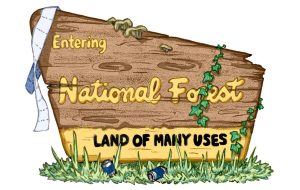Renowned Artist Kiki Smith Speaks at Whitman
December 8, 2017
Whitman was granted an extraordinary opportunity to hear artist Kiki Smith speak in Maxey Auditorium on Wednesday, Dec. 6. Smith is a prominent contemporary artist in printmaking and sculpture. Through a partnership between the Walla Walla Foundry and the Whitman Art Department, funded by the Robert and Mabel Groseclose Endowed Lecture Fund, she came to speak at Whitman about her work as an artist.
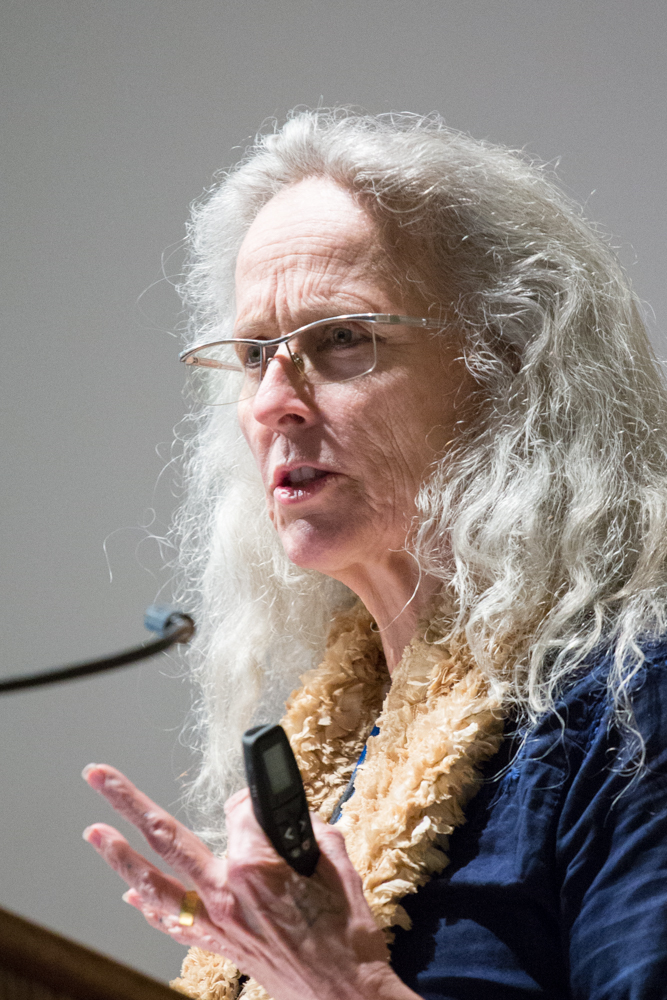
Kiki Smith speaking in Olin Auditorium on December 6th, 2018.
Smith’s artwork spans decades and often deals with the body, as well as bodily functions, fairytales, animals, nature and human-animal relations, often through a feminist lens. Her work is often striking, sometimes even unsettling. At the lecture, Smith showed a slideshow of some of her work, which included blood-stained slides that served as a self portrait. Other distinctive works include a woman defecating and a female nude—based on Little Red Riding Hood—lying down with a wolf.
Professor Daniel Forbes, Director of the Sheehan Gallery, described what strikes him about Smith’s art.
“One of the things that I love about it [Smith’s work] is there’s a certain wildness to it,” Forbes said. “It doesn’t lose its potency or the way that it sort of remains visceral in a lot of ways, and it pulls a lot of internal strength.”
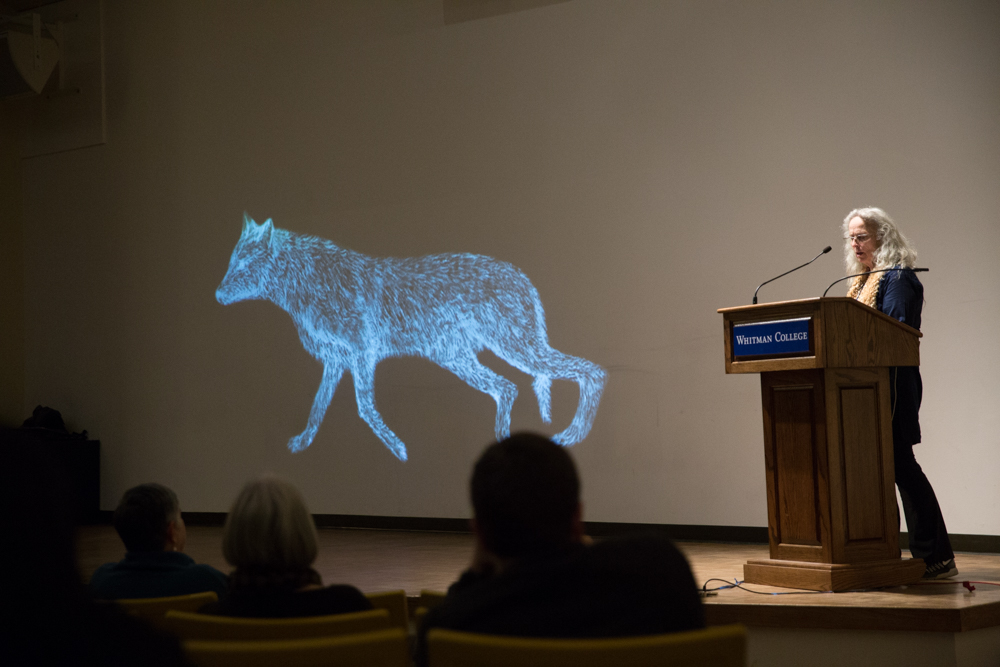
Smith’s work sometimes reiterates her past iconography, such as this figure of a wolf.
Smith discussed the evolution of her artwork in her lecture on Wednesday, as well as some of the themes that she works with, such as the profoundness of nature. She commented on how, as she continues to make work, over time she goes deeper into what she described as “hippiedom.”
During the lecture, Smith also shared her thoughts on the staying power of art. Some artists, she said, make art that carries much weight and lasts for a long time. Her art, on the other hand, is what she calls a temporary model, one for the time being. She creates art that may satisfy a person for a moment, then goes on to create more.
Smith’s art, however, has a definite staying power in the minds of many who look at it. One of the ways in which it is distinctive lies in her boldness and her being unafraid to address difficult images or to explore raw parts or functions of the female body, and its relationship to nature and the world.
“That’s one of the things I really respect about her work, is she doesn’t shy away from that, kind of touching on all of those raw places in the human psyche,” Forbes said. “I think that’s part of what artists, really good artists, are called to do: to create an image that’s going to linger, particularly in a time when we’re so visually saturated.”
Art professor Nicole Pietrantoni, who helped to coordinate the lecture, spoke of her admiration for Smith and the dynamic work that she has contributed to the art community through her striking artwork.
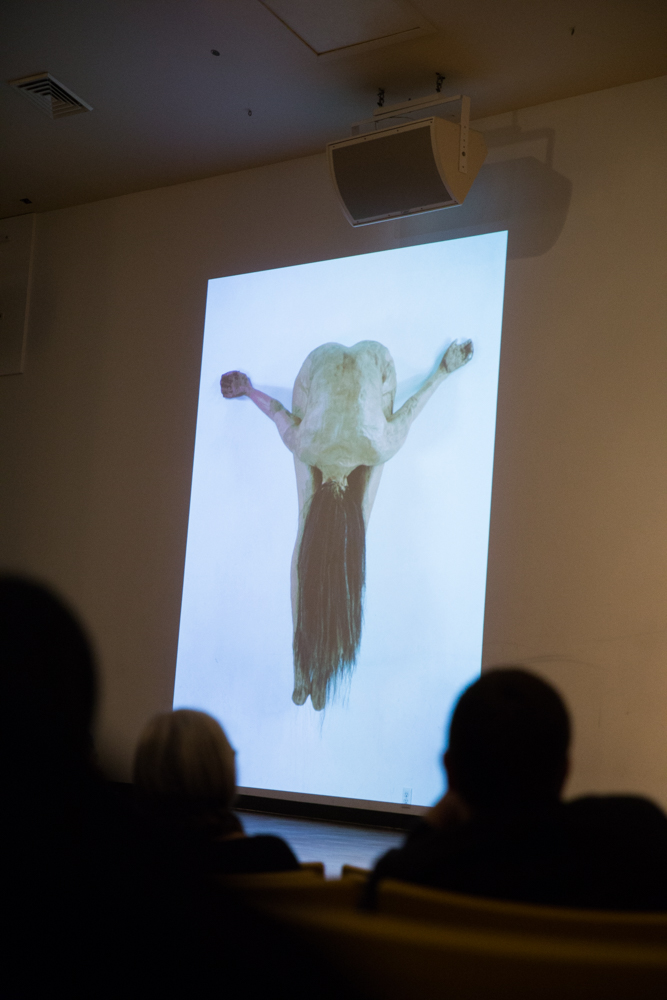
Smith’s work ranges from etching to sculpture.
“She’s someone who’s not afraid to both work with the abject and disgusting parts of our body, but then also work with really beautiful aspects of our bodies or natural world,” Pietrantoni said. “She’s someone who I think kind of came onto the scene when the art community is dominated by men, and she’s this really dynamic powerful artistic voice, just really inspiring for a lot of artists.”
Smith’s indispensable presence in the art community. Art professor Justin Lincoln expressed that it is good for art students and people in general to see how an artist can work on a scale as large as hers. Indeed, the auditorium was filled with Whitman-affiliated persons as well as community members.
“Anyone who has already been as historicized as her is of great value to bring to a school like ours,” Lincoln said.
Pietrantoni remarked that students are often shown artwork in class, but it’s also important to hear the creators of that work speak.
“It’s so meaningful and impactful to hear an artist talk about the work themselves and to talk about the process,” Pietrantoni said. “It’s [art is] process, it’s struggle when you’re making work, it’s making, it’s creating, it’s destroying the thing, it’s rebuilding it, it’s experimenting, it’s this constant flow and sort of process that sometimes our students forget is such an important part of art-making, like questioning, being uncertain about what you’re making.”
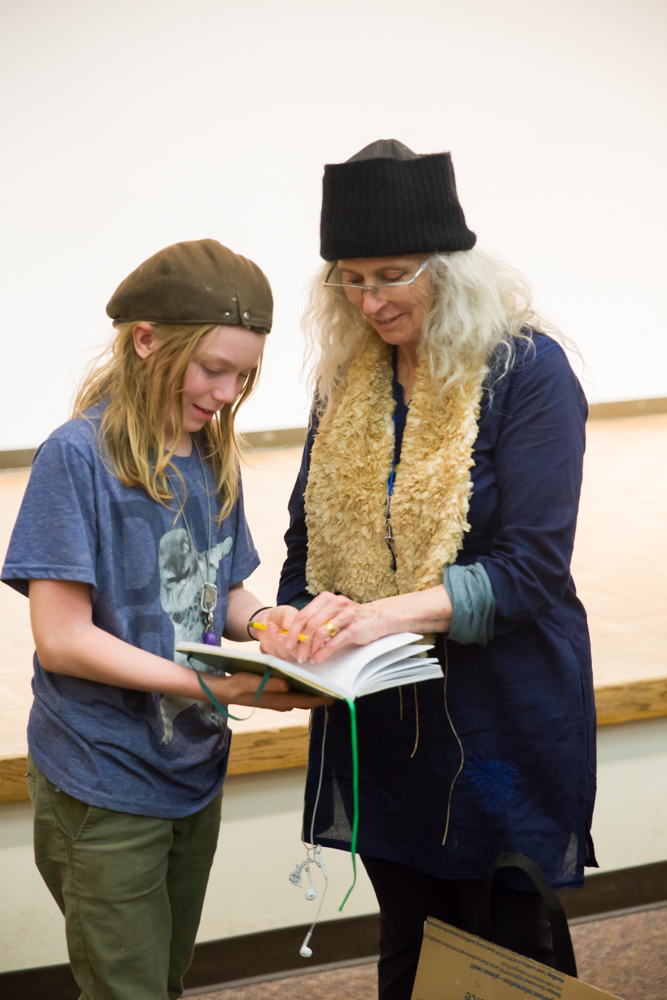
Dylan Farnum, President of the Walla Walla Art Foundry, remarked in his introduction that Smith was generous and gracious. Here, Smith signs books after her talk.
Students also found excitement and meaningfulness in hearing Smith talk. Art major Mercer Hanau ’18 has long been an admirer of Smith’s art.
“In various printmaking classes I’ve had, I turn to her a lot for how to handle fur or how to make an animal more than just an animal,” Hanau said. “Kiki Smith is a good example of things not always being pretty but being intricate and complex and emotionally rich.”
Forbes emphasized the timeliness of Smith’s visit to campus.
“In terms of where we are in this particular cultural moment, all of the things that are going on in the news right now…in light of what’s going on in the world around us, it brings a kind of freshness to her work,” Forbes said. “I think it’s always been timely, but maybe because everything seems so ramped up right now that to have her here at this moment is particularly poignant.”
Smith’s work does deal with much of what is being discussed today, such as feminism and the environment, and her coming to Whitman served as a reminder of the presence of art in our world and the way it remains relevant.





